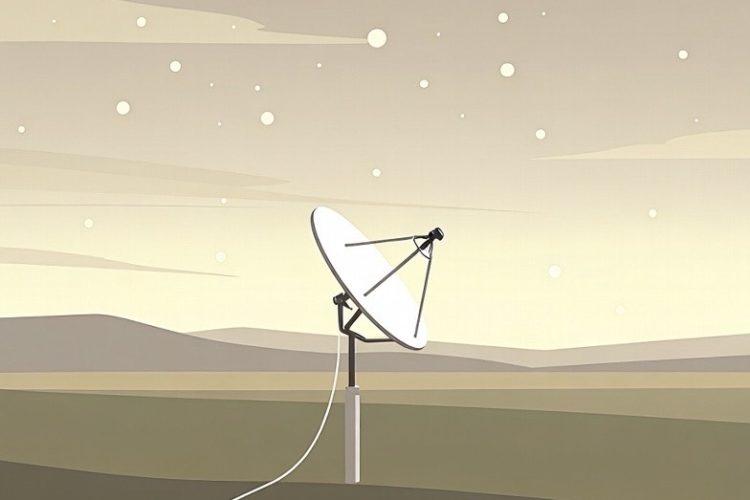In 2025, Starlink delivers reliable high-speed satellite internet, especially in rural and remote areas. Typical download speeds exceed 200 Mbps (often 100–400 Mbps), uploads top 30–40 Mbps, and latency stays low at 25–30 ms, perfect for streaming, gaming, and video calls. Uptime is over 99.9%, with rare outages thanks to laser links, fast satellite handoffs, and AI network management. Weather resistance is strong with snow-melt heaters and rain-fade improvements. Performance varies by location and plan—priority tiers avoid congestion slowdowns better than standard ones. While not as fast as urban fiber, Starlink far outperforms traditional satellite or DSL in underserved spots, making it a dependable choice for millions worldwide.
Long Version
In an era where broadband access defines connectivity, Starlink, the satellite internet service from SpaceX, has emerged as a transformative force. Operating through a low Earth orbit constellation of thousands of satellites, Starlink aims to deliver high-speed internet to underserved regions, bridging gaps in rural internet and remote areas. By late 2025, with over 6 million active customers globally and availability in more than 140 countries, the service has scaled dramatically, adding millions of users and expanding to numerous new markets in the past year. This growth is fueled by advancements in the constellation, including newer generations of satellites and inter-satellite communication via laser links, which enhance bandwidth capacity and redundancy. But the core question remains: Is Starlink reliable in 2025, particularly in terms of real performance and speed? This article delves into the data, user experiences, and technical factors to provide a complete assessment.
Performance Metrics: Speeds and Latency in 2025
Starlink’s performance in 2025 showcases significant strides in internet speed and low-latency delivery. Typical download speeds now exceed 200 Mbps, with upload speeds surpassing 30 Mbps during peak hours, marking a 50% increase in median download speeds since the start of the year. In the United States, median peak-hour downlink speeds approach 200 Mbps, while median latency hovers around 25.7 milliseconds, outperforming many terrestrial operators and making it suitable for real-time applications like video conferencing, online gaming, and streaming. Globally, median latency stands at about 26 milliseconds, with upload speeds consistently above 30 Mbps.
These figures align with benchmarks for broadband, where Starlink routinely meets or exceeds the 100 Mbps download and 20 Mbps upload thresholds for high-speed service. User-reported median download speeds range from 100 Mbps to 250 Mbps or more, and median upload speeds fall between 20 Mbps and 40 Mbps, depending on the service tier. Ping times, a critical measure for responsiveness, are low enough to support seamless experiences in demanding scenarios. For instance, in remote locations with minimal traditional service, Starlink enables unlimited high-speed connectivity, transforming access for work-from-home setups.
However, performance variations exist. Speed spikes can push downloads to 400 Mbps in optimal conditions with advanced hardware, but peak-hour slowdowns may occur due to network congestion, especially in densely populated areas. Despite this, consistency has improved, with fewer instances of intermittent connectivity or speed drops compared to earlier years. Long-term testing since 2022 confirms that 2025 represents the best year yet for overall performance, with average speeds doubling from early benchmarks like 53 Mbps in 2022 to over 100 Mbps in early 2025, and continuing to climb.
Reliability: Uptime, Outages, and Environmental Resilience
Reliability is the cornerstone of Starlink’s appeal, and in 2025, the service boasts uptime statistics exceeding 99.9% across most regions. Network-wide performance achieves this high level even in challenging environments, thanks to features like dynamic coverage and satellite handoffs that switch connections in under a tenth of a second to avoid obstructions. Users report zero downtime over extended periods, with some noting substantial improvements such as a 20% increase in download speeds, a 375% boost in uploads, and cost reductions—all without service interruptions.
Weather effects, a traditional challenge for satellite internet, are mitigated through innovations like enhanced heating functions for snow melting and improved resistance to rain fade. The system handles extreme conditions, including temperatures from -40°C to +60°C, winds up to 270 km/h, and saltwater exposure, making it ideal for maritime use and RV travel. Outages are minimal, with micro-outages and connection drops rare; packet loss is low, and service interruptions are often resolved via AI-powered network management and predictive maintenance.
That said, challenges persist. In some regions, user experiences can vary due to rising terrestrial competition and occasional low speeds. Latency spikes or deprioritized traffic during high demand can affect non-priority plans, leading to temporary slowdowns. Overall, though, Starlink’s redundancy—bolstered by ground stations, signal travel distance optimization, and a vast satellite constellation—ensures high reliability, with users in farming communities praising its consistency where traditional providers fail. Beam switching technology introduced in mid-2025 further enhances resilience by routing around obstacles like trees or buildings in real-time, maintaining connectivity without user intervention.
Factors Influencing Performance and Reliability
Several elements shape Starlink’s real-world performance. Geographic location plays a pivotal role; coverage is robust in rural and remote areas but can vary in urban settings due to network congestion. Service tiers, including priority plans, business plans, and roam plans, offer tailored options—priority users enjoy higher bandwidth capacity and lower latency during peaks, while standard plans may face deprioritized traffic.
Obstruction scans and the need for a clear sky view are crucial; built-in tools help users map and mitigate issues, ensuring optimal satellite handoffs. Mobile internet users, such as those in RVs or on maritime routes, benefit from wind resistance and portable kits, with speeds holding steady even in motion. The new Performance terminal, designed for harsh environments, supports speeds up to 400 Mbps and beyond, with future upgrades enabling gigabit capabilities in remote locations. It features enhanced durability, including IP69K waterproofing and a 10-year mission life, suitable for industrial applications like farms, job sites, and drone operations.
Advancements in 2025, like direct-to-cell capabilities and inter-satellite laser links, further enhance responsiveness and reduce latency spikes. These network enhancements, combined with newer satellites, provide dynamic coverage and better handling of performance variations, making Starlink more resilient than ever. Cumulative capacity has reached around 450 Tbps, supporting the growing user base without proportional degradation in service quality.
Use Cases: From Everyday to Extreme
Starlink excels in diverse applications. For rural internet users, it delivers stable broadband where DSL or cable can’t reach, supporting online gaming with low ping and streaming without buffering. In remote areas, it’s a lifeline for activities like geological exploration, enabling real-time data transmission via sensors. Maritime use is expanding, with airlines equipping fleets for high-speed connectivity at cruising altitudes.
RV travel and mobile internet users appreciate its portability, while business plans cater to enterprises requiring robust access for large-scale events. Even in crisis scenarios, such as power outages in conflict zones, Starlink maintains connectivity for thousands of units, though costs can be a barrier for some. For work-from-home professionals, it’s reliable for video calls and screen sharing, often outperforming legacy providers. In extreme settings, like warzones or high-vibration environments, the rugged hardware ensures uninterrupted operation.
Challenges and Comparisons
Despite its strengths, Starlink isn’t flawless. Intermittent connectivity can occur in high-congestion zones, and costs—starting at around $2,000 for performance kits (down from previous prices)—may deter budget-conscious users. Service plans range from $65 per month for basic priority access to higher tiers for terabyte-level data. Compared to benchmarks, it shines, but versus fiber optics, latency might not match in ultra-dense urban areas. In emerging markets, upcoming launches promise 200 Mbps speeds, but regulatory hurdles can delay rollout.
User feedback highlights occasional service interruptions, but long-term assessments confirm it’s faster and more reliable than ever, with minimal need for support. After several years of operation, many consider it worth the investment for its speed and uptime. Capacity constraints in high-demand areas can lead to slowdowns or additional fees for prioritization, and while most users meet broadband benchmarks, a small percentage may not in suboptimal setups.
Conclusion: A Reliable Choice in 2025
In 2025, Starlink stands as a highly reliable satellite internet option, with real performance metrics that rival or surpass traditional broadband in many scenarios. Its blend of high download and upload speeds, low latency, and robust uptime—bolstered by technological leaps like laser links, beam switching, and AI management—makes it an authoritative solution for connectivity challenges. While not immune to network congestion or environmental factors, its consistency and coverage in rural, remote, and mobile contexts position it as a game-changer. For those in underserved areas, Starlink isn’t just viable—it’s often the best path to dependable, high-performance internet.









